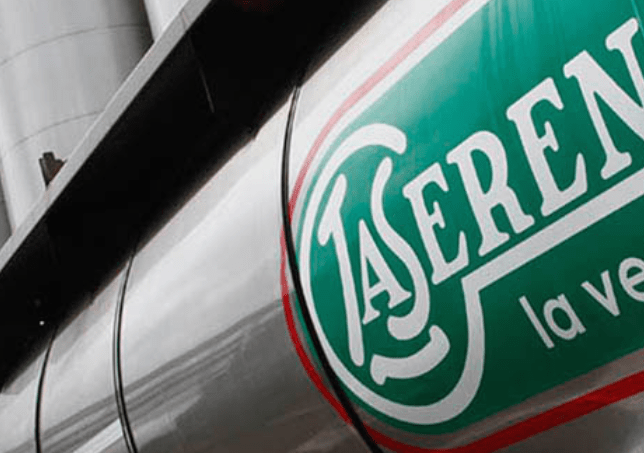It has an important role to play if the target of doubling farmers’ income has to be achieved in near future.
India ranks first among the world’s milk producing nation. The dairy products are currently consumed all across the world. However, the country exports a relatively smaller volume of dairy products and has a small share in global dairy trade despite being the largest milk producer in the world.
Dairy products exported from India are mainly Skimmed Milk Powder (SMP), butter, butter oil, cheese, ghee and butter milk. SMP has share of around 30% in the exports of the dairy products from the country.
The major export destinations for dairy products are Turkey, the United Arab Emirates, Egypt, Bangladesh, Bhutan, the United States, Saudi Arabia and Malaysia. The SMP is traded globally. Despite being the biggest producer of milk, India has negligible presence in global dairy trade.
Secondary source of income
Dairying has become an important secondary source of income for millions of rural families and has assumed the most important role in providing employment and income generating opportunities, particularly for marginal and women farmers.
Most of the milk is produced by animals reared by small, marginal farmers and landless labourers. Of the total milk production in India, about 48% milk is either consumed at the producer level or sold to non-producers in the rural area. The balance 52% of the milk is marketable surplus available for sale to consumers in urban areas.
Out of marketable surplus, it is estimated that about 40% of the milk sold is handled by the organised sector (16.93 million farmers have been brought under the ambit of about 1,90,516 village-level Dairy Corporative Societies).
The biggest component of India’s dairy market is liquid milk. According to Dairy India (2017), the liquid milk market’s share is estimated to be around 58% of the total value. After liquid milk, the biggest segment of the country’s dairy market is dairy products such as khoa, chhana and paneer used as base material for a variety of indigenous sweets and preparations, followed by ghee. Much of these products are produced by households or halwais (sweetmeat makers).
In the organised sector, private dairy companies are investing in developing an efficient milk procurement network as well as marketing of liquid milk and valued-added products, in addition to focussing on bulk commodities like milk powder and ghee. Till the last decade, most of the private processors were operating on a small scale, focussed on stabilising their operations. Over the years, some of them have expanded to establish a strong regional base with aspirations to have a national presence in the next few years.
Some of the major organised private players include Tamil Nadu based Hatsun Agro Product Ltd, which procures an average 26 lakh litre per day (LLPD) or around one million tonne (MT), annually. Besides, there are companies with an average milk procurement of 5-15 LLPD each. These include Parag Milk Foods, Schreiber Dynamix Dairies, Heritage Foods, Tirumala Milk Products, Sterling Agro Industries, VRS Foods, Nestle India, Prabhat Dairy, Indapur Dairy, Dodla Dairy, Creamline Dairy Products, SMC Foods, Milkfood, Gopaljee Dairy Foods and Anik Industries.
Shortfall of ambient, reefer and insulated trucks
The Union government has spotted logistics as a lucrative investment opportunity as it is driven by a rapidly growing market in the Indian dairy sector. There is a huge shortfall of ambient, reefer and insulated trucks as well as cold warehouses.
“Here the total investment required is Rs 9 crore to Rs 11 crore. The potential returns expected are 7 to 11 per cent IRR (internal rate of return) with a payback of 6 to 12 years. We see that there are attractive returns and proactive government support,” said Atul Chaturvedi, Secretary, Ministry of Animal Husbandry.
Further there is potential to set-up additional transportation capacity across reefer, insulated and ambient vehicles and cold warehousing to match enhanced milk processing requirement. “Some of the potential business models would be establishment of independent warehouse operations and transportation services including third-party contract logistics services,” he added.
Five investment opportunities
Identifying five investment opportunities in dairy between Rs 125 and Rs 140 crore, Chaturvedi pointed out that these span across production and supply of cattle feed. “Infrastructure for chilling and processing, widens processed milk opportunity. This along with supply of D2C milk across top consumption hubs like the metros would take the dairy industry in the country to the next level of growth. There is also a huge demand for A2 milk tipped to be far more nutritious.”
While the infrastructure gap for production of cattle feed is 10-18 MMT, in the area of chilling units too the shortfall was 120-130 MMT. The investment potential was tipped to be Rs 3,000-5,000 for cattle feed. The highest investment came forth for production of milk at Rs 19,000 to Rs 20,000.
The overall production capacity envisaged for 2025 is 285-295 MMT (million metric tonne) as against the current 188 MMT. Here states of UP, Rajasthan and AP account for 40% of total investment potential.
Specifically in logistics, reefer vehicles are a profitable investment opportunity with potential of 20% returns and payback of 6-7 yrs, with proper route and load planning.
Investment for reefer vehicles varies significantly across capacities. It can vary from Rs 18 to Rs 30 lakh depending on reefer capacity from 6 tonne to 18 tonne. The key returns for the project are based on distance travelled, percentage travel with load, diesel prices and product mix. Even insulated vehicle is a profitable investment opportunity with potential of 18% returns and payback of seven years with proper route/ load planning, according to Chaturvedi.
Noting India’s Opportunities in Dairy Processing Sector in the Post
Covid Era, KPMG in its report noted that scope for milk collection, chilling storage, processing, packaging and transporation were lucrative avenues for start-ups to consider.
Natural and immunity-boosting additions
Recently the ready-to-cook major, iD Fresh, stormed into the dairy market with its launch of curds only in Hyderabad. This, according to the company, would cater to the growing demand for healthy, natural and immunity-boosting additions to the daily diet. The product, made with farm-fresh milk and natural culture, has a shelf life of 12 days and is priced at Rs 65 for 400 gram.
Musthafa PC, CEO and co-founder, iD Fresh Food, said, “The Covid-19 pandemic has put the spotlight on health and safety. An increasing number of people today are making conscious food choices to boost immunity and minimise safety hazards. At iD, since our inception in 2005, we have always embraced 100 per cent natural, home-made style of preparation, without the use of any chemicals and preservatives. Convenience and ease of use are never encouraged at the cost of health and safety of our consumers. We’re committed to bringing you food that is healthy and wholesome – just the way it’s made at our homes. I hope iD Curd receives the same love that you have showered on iD Natural Paneer. Personally, I must confess that I’m in love with its creamy, tasty goodness!”
Quoting the IMARC report of 2019, Musthafa said that the curd market in India grew at a CAGR of 13 per cent during 2014-2019 and is expected to reach a value of nearly Rs 1,809.3 billion by 2024. The healthy growth of the market is attributed to rising disposable incomes, increasing health-consciousness among consumers, and affordable price.
Consumption of value-added products
According to Brahmani Nara, executive director, Heritage Foods, dual and disposable incomes are set to spur consumption of value-added products. There is a need to or seamlessly integrated dairy play from procurement to delivering fresh and nutritious milk at the doorstep.
Health-conscious consumers are accepting milk and milk products as a food supplement. There is a clear shift from carbonated drinks to milk products. Value-added milk products are being purchased through large format stores and modern trade which is picking up pace. Attention to farmer welfare and cattle health-nutrition is resulting in higher milk yields. Reaching out to younger consumers, keeping the brand agile in tune with changing times and consumer needs besides launching innovative and fortified products is the growth path of the sector.
Recently Heritage too launched ginger, tulsi and turmeric variants of milk, which is the order of the day. It has also launched classic, unique and exciting new flavours in ice creams like cookies & cream, berry ripple and caramel ripple.
The ginger milk is good for thermo regulatory, thrombotic, and respiratory functions of the body, which makes it an ideal choice for immunity booster. Besides, ginger is proven to be good in improving body metabolism, which makes body healthy and warm ginger milk has a strong effect against throat infection and gives relief from throat pain.
Here Nara noted, “We are always at the forefront of consumer’s health and happiness, which can only be achieved by bringing innovative products at the right time. Here Heritage understands the needs of consumers and has been at the forefront to bring many value-added healthy products to consumers. As it helps to build immunity, there is no better time than now, wherein entire family needs to have healthy and nutritious products to build immunity.”












